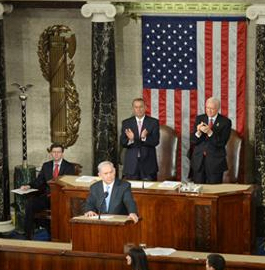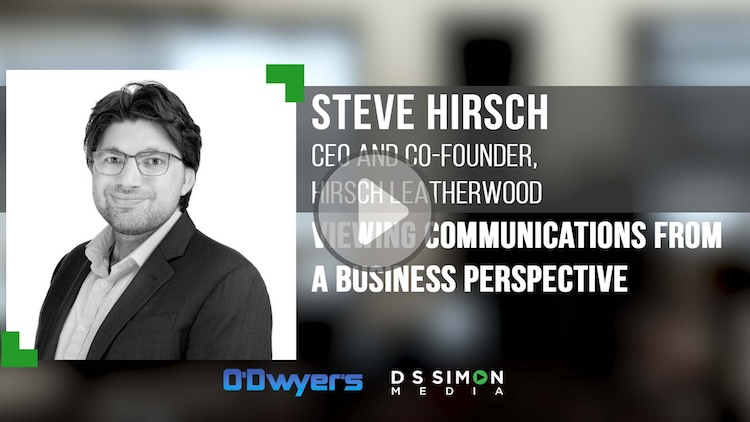In the old days (last week), before there were secretive Hillary Clinton emails and boneheaded Republican letters to Iranian despots, the most inflammatory thing in town was Bibi Netanyahu’s speech to a joint session of the U.S. Congress.
 The real reason Nancy Pelosi was “near tears” over Netanyahu’s remarks was because Bibi nailed it.
The real reason Nancy Pelosi was “near tears” over Netanyahu’s remarks was because Bibi nailed it.
The controversial speech by the controversial Israeli prime minister was hailed by its Republican allies as one of the century’s great oratorical triumphs and chastised by its Democrat critics as a condescending diatribe.
But it’s still being discussed and likely will continue to be as negotiations with Iran on nuclear capability continue. And in this day of six-second Vine videos and Snapchat, precious few 20-minute addresses keep people talking. (See this week’s Clinton “major address” to the United Nations on women’s rights, if you can find it!)
So if you’re a student of speech-making, Bibi’s remarks to Congress -- whether you love him or hate him – have to be considered a rip-roaring tour de force in terms of how a speech should be stylized and delivered.
Here’s how Netanyahu pulled it off.
- Neutralizing intro
It is imperative a speaker establish a “common bond” with his audience. This was especially challenging for Bibi, who was met at the start by Democrats’ indifference, at best, or disdain, at worst.
Netanyahu arrived amidst a firestorm of controversy; many argued that accepting an invitation from Republican Congressmen without consulting the President was the epitome of diplomatic duplicity.
So Bibi had to win over distressed Democrats by neutralizing the controversy at the start, first by confronting it head on:
“I deeply regret that some perceive my being here as political. That was never my intention.”
And then by saluting President Obama in a specific and personal way:
“We appreciate all that President Obama has done for Israel…..And some of what the president has done for Israel might never be known, because it touches on some of the most sensitive and strategic issues that arise between an American president and an Israeli prime minister. But I know it, and I will always be grateful to President Obama for that support.”
- Clear and compelling thesis
Every good speech must have a clear thesis, a compelling central idea at the heart of the composition.
Accordingly, Netanyahu’s thesis -- that the current U.S. negotiations with Iran are a mistake that will result in it achieving nuclear capability -- rang clear throughout his address.
“The greatest danger facing our world is the marriage of militant Islam with nuclear weapons. To defeat ISIS and let Iran get nuclear weapons would be to win the battle, but lose the war. We can’t let that happen.”
- Sound supporting evidence
The best speeches include facts, statistics, illustrations and examples that corroborate the speaker’s main points.
Netanyahu used these to cast doubt on the motives of Iran’s new leaders, President Hassan Rouohani and Foreign Minister Mohammad Javad Zarif, both considered more “moderate” than their predecessors.
“Rouhani’s government hangs gays, persecutes Christians, jails journalists and executes even more prisoners than before…..Last year, the same Zarif who charms Western diplomats, laid a wreath at the grave of Imad Mughniyeh, the terrorist mastermind who spilled more American blood than any other terrorist besides Osama bin Laden.”
And to those who doubted the intentions of these men and their allies, he noted.
“For those who believe that Iran threatens the Jewish state, but not the Jewish people, listen to Hassan Nasrallah, the leader of Hezbollah, Iran's chief terrorist proxy. He said: If all the Jews gather in Israel, it will save us the trouble of chasing them down around the world. “
- Memorable rhetorical flourishes
History’s greatest speeches all contain memorable turns of phrase; rhetorical zingers – “We have nothing to fear but fear itself”…”I have a dream today”….”Mr. Gorbachev tear down this wall” -- that sizzle their way into the public conscience.
Here, Netanyahu availed himself of a diverse palette of stylistic devices, among them:
* Comparisons and contrasts.
“America's founding document promises life, liberty and the pursuit of happiness. Iran's founding document pledges death, tyranny, and the pursuit of jihad.”
* Alliteration.
“Iran's goons in Gaza, its lackeys in Lebanon, its revolutionary guards on the Golan Heights are clutching Israel with three tentacles of terror.”
* Rule of 3’s.
“Iran blew up the Jewish community center and the Israeli embassy in Buenos Aires. It helped Al Qaida bomb U.S. embassies in Africa. It even attempted to assassinate the Saudi ambassador, right here in Washington, D.C.”
* Metaphors and similes.
“This deal won't be a farewell to arms. It would be a farewell to arms control. And the Middle East would soon be crisscrossed by nuclear tripwires. A region where small skirmishes can trigger big wars would turn into a nuclear tinderbox.”
* Topical references.
“In this deadly game of thrones, there’s no place for America or for Israel, no peace for Christians, Jews or Muslims who don’t share the Islamist medieval creed, no rights for women, no freedom for anyone. So when it comes to Iran and ISIS, the enemy of your enemy is your enemy.”
- Surprise props
Just as the finest dramas rely on unexpected twists to lift their plot, so do the most memorable speeches feature surprises that energize the audience, like using props.
Here, Netanyahu demonstrated how the hackneyed technique that presidents always use to cite celebrities in the crowd, can be used for greater impact. After acknowledging famed Holocaust survivor Elie Wiesel in the gallery, Netanyahu spoke directly to him,
“Elie, your life and work inspires to give meaning to the words, ‘never again.’ And I wish I could promise you, Elie, that the lessons of history have been learned. I can only urge the leaders of the world not to repeat the mistakes of the past.”
The applause was thunderous.
Rousing Conclusion
And Netanyahu wasn’t through surprising his listeners, saving his most deft oratorical touch for last.
The prime minister concluded by looking up and pointing to the image on the marble relief hanging over the House gallery doors.
“Facing me right up there in the gallery, overlooking all of us in this chamber is the image of Moses. Moses led our people from slavery to the gates of the Promised Land. And before the people of Israel entered the land of Israel, Moses gave us a message that has steeled our resolve for thousands of years. I leave you with his message today, ‘Be strong and resolute, neither fear nor dread them.’
“My friends, may Israel and America always stand together, strong and resolute. May we neither fear nor dread the challenges ahead. May we face the future with confidence, strength and hope.”
Yup. Bibi nailed it.
Fraser P. Seitel has been a communications consultant, author and teacher for 40 years. He may be reached directly at [email protected].










 Have a comment? Send it to
Have a comment? Send it to 
No comments have been submitted for this story yet.